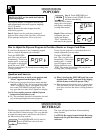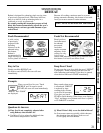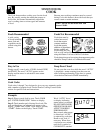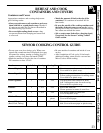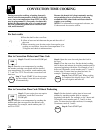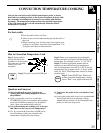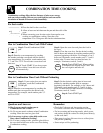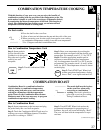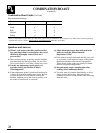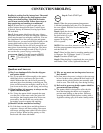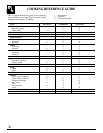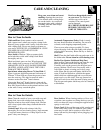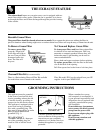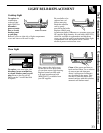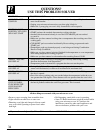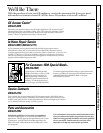
COMBINATION ROAST
(continued)
28
Combination Roast Guide (Use Probe)
(Recommended Settings)
Food Medium Well
Beef ✓✓
Lamb ✓✓
Pork — ✓
Chicken — ✓
Turkey — ✓
†The U. S. Department of Agriculture says
“Rare beef is popular, but you should know that cooking it to only 140°F. means some food poisoning
organisms may survive.” (Source: Safe Food Book. Y
our Kitchen Guide. USDA Rev. June 1985.)
Questions and Answers
Q. When I cook poultry, the thin, small areas like
legs and wings often overcook before the rest of
the bird is thoroughly cooked. How can I
prevent this?
A. Thin, uneven portions of poultry may be shielded
with aluminum foil during cooking. Do not allow
foil to touch shelf or oven sides, arcing may occur.
Q. Usually my temperature probe gives very
accurate results, but this time it didn’t.
What happened?
A. If the temperature probe is positioned touching fat
or bone, an inaccurate reading may result. Be sure
to place the probe in solid muscle, usually the
thickest, meatiest part of the roast or poultry, or in
the center of a meat loaf or casserole.
Q. Meats often take longer than indicated in the
guides to reach the desired internal
temperature. Why?
A. If the meat is recently defrosted and still very cold
or icy inside, it will require a longer cooking time
than meat which has been merely refrigerated.
Times shown in the guides are usually for meats
that are refrigerator temperature.
Q. Do most meats require standing time after
cooking with Combination Roast?
A. You may want to let meats stand briefly, to allow
easier carving and serving. Most meat roasts
continue to cook for a few minutes after removing
from the oven.



